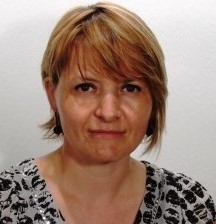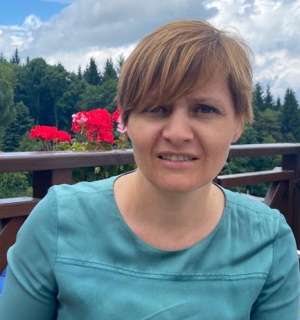- News
- Meet the Manager of the Earthn...
Meet the Manager of the Earthnet TPM Programme
11 May 2022

Peggy Fischer is the Manager of the Earthnet TPM Programme and the Mission Manager of ESA Third Party Missions (TPMs). Her role also entails the management of the Copernicus Contributing Missions Activity, as part of the Copernicus programme, on behalf of the European Commission. Peggy is working for the European Space Agency and she is based in Frascati, Italy.
Born in Chemnitz, Germany, Peggy holds a Master’s of Science degree in Remote Sensing from the University College London and a Master’s of Engineering degree in Cartography, from the Dresden University of Applied Sciences. She arrived at ESA as a Young Graduate Trainee in 2003. During her work in the EO Mission Management and Ground Segment Department at ESRIN, Peggy led many Earth Explorer, ERS/Envisat and Third Party Mission ground segment project teams and was the Manager of the ground segment for ESA’s Aeolus mission.
ESA: How did your studies shape your job choices?
Peggy: My passion for Earth observation started during my studies at the Dresden University of Applied Sciences, where I studied Cartography. The subject that excited me the most was Remote Sensing, which led me also to complete the thesis of my Master’s of Engineering studies with a theme that combined the field of Cartography with Remote Sensing capabilities. After my Master’s degree in Germany, I decided to dive deeper into the field of Earth Observation and I moved to London and engaged in a Master’s of Science in Remote Sensing, at the University College London.
At UCL I learned a great deal about Remote Sensing technologies and sensors, Digital Image Processing and Spatial Data Handling, EO applications and more.
After my studies, it was crystal clear for me that I wanted to work in the Space industry, in the area of Earth Observation. Whilst working for a UK-based space related company, I learned about the YGT opportunities at ESA and applied for it. Indeed the European Space Agency had seemed to me since my early days of academic studies the greatest place to work for—and in the end it worked out.
ESA: What does your role as Mission Manager of ESA Third Party Missions entail?
Peggy: This role entails the management of ESA’s Third Party mission portfolio, including over 50 TPMs, ensuring a continuous evolution and innovation of the data offer, for the benefits of ESA’s Earth Observation programmatic activities and for the European and world-wide science community.
ESA’s TPM data offer includes optical and SAR data at Very High Resolution, atmospheric composition data and more. The Earthnet TPM activity continues to be highly appreciated by scientists and applications developers. 10,000 research projects have used TPM data since 2008, with almost 1,000 new registered TPM users in the last 12 months.
As mission manger, I regularly report to ESA’s Member States on the progress of each approved ESA TPM and propose new missions to be added to the programme, based on different criteria and on user needs. In view of industrial policy and commercialisation, in particular focus is given to European commercial data providers, with special attention to New Space companies within Europe, which provide valuable EO data of interest to the scientific user community for research and/or (pre-)operational purposes. The Earthnet programme is user driven and acts as such as an early anchor customer for these (European) NewSpace missions.

ESA: What are the challenges of managing such a vast Programme?
Peggy: One of the challenges is to move forward with a growing range of activities within the Earthnet programme, with a budget that has not seen an increase over the last years.
More than ever, the Earthnet activities are relevant within ESA’s Basic Activities, enabling scientific users in the Member States a 'free' access to data from Earth Observation Third Party Missions, increasingly operated by commercial operators, including New Space companies.
The Third Party Missions central element of the programme, which also includes the quality benchmarking of data from commercial and New Space missions, is complemented with a set of Earthnet collaboration activities, enabling a strong ESA and European presence within an international context, including also the International Charter on Space and Major Disasters, through which satellite data are freely made available for disaster management activities, to the benefits of European and world-wide citizens.;
Earthnet is pertinent for several objectives of ESA’s 2025 Agenda, including the strengthening of ESA/EU relations with the excellent synergy between ESA Earthnet and EU Copernicus programme, with respect to EO commercial data providers and the Earthnet ‘commercialisation’ role with European New Space companies, to foster science and pre-operational applications development (e.g. preliminary evaluation of data quality, support to cal/val operations).
The Earthnet budget stability does not match well with these increased expectations versus Earthnet, from scientific users, from industry including commercial satellite operators, from European New Space participants and from international partners. The Earthnet team is thus hoping for an increase at the next ministerial conference later in 2022.
ESA: You are part of a new generation of women covering managerial roles within ESA. Do you see yourself as a role model for young women?
Peggy: It’s great to see an increase of women in managerial roles within ESA. I don’t consider myself as a role model, but if I can stimulate other women to apply for a position to join the Agency and follow a similar path, I would be very happy. It’s a great workplace and I recommend to watch out for opportunities. ESA offers the Young Graduate Trainee programme, which I warmly recommend and has been my initial stepping stone within ESA now nearly 20 years ago, but also various other entry points exist in the Agency.
ESA: Any last thought on your overall experience?
Peggy: I am in this position now since about one year and it has been a fantastic experience, and an intense learning curve to get on top of all the activities entailed within this role. My goal is to continuously work with focus to bring the Earthnet TPM programme activities forward for the benefits of ESA and the European science community, as well as ensuring the continued synergy with the Copernicus Contributing Mission Activity, which ESA manages on behalf of the European Commission.